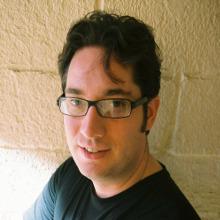Chasing Neutrinos
(Inside Science) -- The neutrino experiment formerly known as LBNE has been transformed. The proposed experiment will be the most powerful tool in the world for studying hard-to-catch particles called neutrinos.
Spokesperson for the project, Mark Thomson, a professor of physics at the University of Cambridge, says, “The first thing we’re looking for is a fundamental difference between matter and anti-matter. This has been seen in particles called quarks before, but that’s not enough to explain why in fact the universe is dominated by matter over anti-matter. And our best bet for that is it’s something rather technical, that’s called leptogenesis but it’s connected to neutrinos.
Neutrinos are the most elusive particles in the universe; in fact there are more neutrinos in the universe than there are any other matter particle. It took a number of years before actual experimentalists first detected neutrinos. It’s only in the last 20 years that scientists started to uncover the real mysteries of neutrinos, and how they actually operate, and what makes them different from all the other particles.
Thomson says, “What we want to do with our experiment is fire a beam of neutrinos and detect them and look for the way they change their flavors and then do the same experiment with the anti-particles equivalent -- the anti-neutrinos. By doing that we can look for direct differences between neutrino oscillations and then for anti-neutrinos. By doing that we can detect a fundamental difference between matter and anti-matter.
“The first component is we have to produce a very intense beam of neutrinos. To give you a sense of the power to actually generate the number of neutrinos we need, we need about a megawatt of power of protons smashing into a target. So, what we do is accelerate many protons, smash them onto a target, and that produces lots of particles. And we let those particles then decay in a 200-meter-long tunnel, and many of those particles decay to neutrinos.
“So if you point your particles in the right direction, in our case, South Dakota, then the neutrinos will follow that direction. So in South Dakota what we’re planning to build are very, very large tanks of liquid argon. To give you an idea of the size, each of these detectors is roughly the size of an Olympic swimming pool made six times deeper. We’re going to have four of these detectors. They’re not filled with water, they’re filled with liquid argon,” says Thomson.
When a neutrino happens to interact anywhere in these vast swimming pools of liquid argon, what scientists are able to do is see all of the particles that come out of that interaction. Researchers will actually be able to image them -- not in just two-dimensional photographs – and produce three-dimensional photographs of all of the particles that come out of the neutrino interactions. And that enables scientists to measure the properties of that neutrino interaction very, precisely.
Finally, Thomson says, “This is the remarkable thing from my perspective about this experiment -- I never thought, certainly in my lifetime, we would actually be able to do this experiment. So what we’re doing is something that really proves a fundamental symmetry of the universe.”

